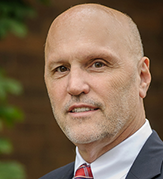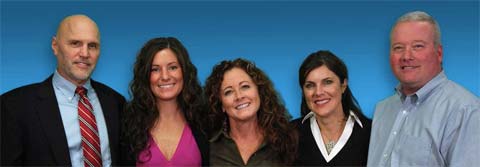 Bulletin, July 2013
Bulletin, July 2013
The Latest in Area Economic and Technical Trends
Exclusively to Clients and Friend of Advanced Practice Management

Our Dental Dow Jones: First Half 2013
Comparing the averages from January through June 2013 to the same period in 2012, we find that practice production is up 2.9% andcollections are even with the previous year. Patient flow, as measured by exams, is up 1.3%. Crown and bridge production is up 6.6%. New patients are down 6.2%.
| (first half) | |||||
| 2009 | 2010 | 2011 | 2012 | 2013 | |
| Prod. Increase | .5% | 1.4% | 2.5% | 3.3% | 2.9% |
| Coll. Increase | .4% | 0.4% | 1.6% | 3.5% | 0% |
A Big Second Quarter:
As you may remember, the first quarter of 2013 was disappointing. Practice production wasdown 1.6% and collections were down 4.2%. Comparing the second quarter of 2013 to the second quarter of 2012, we see the numbers perking up. Production was up 7% andcollections were up 4%. Patient flow was up 2.7%. Crown and bridge was up 12% with the overall production per exam up 3.7%.
So maybe the recovery we were starting to see in 2012 has recovered!
Some Facts To Consider:
- Only 3% of Americans with dental benefits use their annual maximums. (NADP Premium Trends Report, 2010)
- Over 150 million Americans have no dental coverage—2.8 times the medically uninsured. These individuals are more likely to have extractions or dentures and less likely to have restorative care or receive treatment for gum disease. Furthermore, those without dental benefits report higher instances of other illnesses. They are:
- 67% more likely to have heart disease
- 50% more likely to have osteoporosis
- 29% more likely to have diabetes
- There are 738,000 Americans annually who end up in emergency rooms for dental treatment.
Insurance Alternatives:
Given that much of the population has no dental insurance, it certainly makes sense that alternatives to insurance are making headway (as discussed in my previous April 2013 Bulletin).
These programs typically involve a membership fee which then entitles the patient to a discount on dental services. This encourages the patients to come back for their check-ups and to go ahead with treatment (one of the main benefits of this type of program, by the way). It certainly bonds them to your office. You are the only “provider” of your own plan!
We can help get this rolling in your practice. Just call!

Why Online Reviews Matter To Your Practice:
- 90% of consumers online trust reviews from people they know and a surprising 70% of consumers online trust reviews from people they don’t know.
- A minimum of 6 reviews is required to earn the consumer’s trust.
- People will click on the listing with the most reviews even if it’s further down in the search results.
- In Google, if you have 5 or more reviews, your listing will stand out in the search results with the stars highlighted in yellow.
- Search engines use reviews as a signal of trust and popularity. Reviews impact how your practice ranks in the search results.
Make it easier to get reviews:
1) Collect patients’ email addresses: Many of you are moving to digital communication software and this is necessary in any case. When talking with patients, ask for their email if you don’t already have it. Everyone on staff can help with this. Tell patients that you appreciate their business and that you are always looking for feedback in areas to improve.
If for example, their email is a gmail, their reviews can be especially useful because it will show on Google’s Place Page.

3) Use your website to collect and showcase your reviews:Make sure that you have “buttons” on your website that make it easier for patients to see reviews or leave reviews.
4) Send eBlasts: An occasional email is a good way to keep in touch with patients. You don’t want to overdo it. We feel that quarterly is appropriate. This can be done around seasonal events such as Dental Health Month, Back to School, the Insurance/Flex Plan Year End letter and so on. Include a mention of reviews and a means (link) for them to submit their feedback.
Put one team member in charge of this and monitoring online reviews. Have him/her report to you each month.
This person should be in charge of keeping everyone on your team excited about getting patient reviews.
There used to be a time (Bill Rossi refers to it as “the good old days”) when Dentists could just put a shingle up and forget about it. But nowadays, unless you want to be overly dependent on PPOs, you and your staff need to put in the effort to get patient reviews.

Smart Coding Can Add $1,000s to Your Bottom Line! When to use Palliative Treatment (D9110) vs. Limited Exam (D0140) and/or Open & Drain (D3221)
D9110 is an under-utilized code*
1) D9110 is often reimbursed at a higher rate (usually $100-$137) than D0140 Limited Exam (usually $55-$70). So, $30 to $50 more.
2) It is not a “take back code” [which means if you complete the restoration, insurance will not subtract the payment they made on the initial service, i.e., D3221 (Open & Drain) or D2940 (Sedative Filling)].
3) It is generally benefited 3 times per year and does not affect the frequency limitations of exams, such as D0140 does.
Example Situations/Narratives:
The following are possible palliative situations where you would want to use D9110 in place of D0140 to relieve acute and spontaneous pain, discomfort, or sensitivity.
1) Fractured tooth: “Mesio-buccal cusp of tooth #3 was fractured. Area was smoothed for patient comfort.” D0140 could be used but D9110 will reimburse higher and doesn’t affect the D0140 limitations (2 per year).
2) Fractured tooth: “Gluma was applied to mesiobuccal cusp area to relieve discomfort, tooth #19.” D0140 could be used but D9110 will reimburse higher and doesn’t affect the D0140 limitations (2 per year).
3) Temporary placement of IRM for discomfort associated with heat and/or cold: “Patient had sensitivity with tooth #3. Caries was excavated and IRM placed.” Formerly called a sedative filling, D2940 could be used but the insurance
company may “take back” any reimbursement when the final restoration is placed by the same dentist.
4) “Acute pain with Tooth #3: #3 was opened only (partial pulpal debridement) for drainage and patient relief. D3221 may have a higher UCR Shelly Ryan, RDA than palliative (D9110). (Note: D3221 may be a “take back” if the same office does the subsequent endodontic treatment with some carriers.) So, it is best to use palliative D9110 in this situation when the same provider will be completing the root canal. It is best to use D3221 when you are referring to an Endodontist.
NOTE: Palliative (D9110) can be reported in conjunction with an office visit—after regularly scheduled hours (D9440). The patient would generally be responsible for payment of the afterhours visit (D9440) out-of-pocket (usually $75-
$160).
The average Doctor sees approximately 10 emergencies/mo. – if half of those are Palliative and coded such – profits increase by at least $300/mo. or $3,600/yr. just from using the appropriate code!
Share this information with your administrative staff!
* Our thanks to Dr. Charles Blair, D.D.S., for parts of this article from his book, Coding with Confidence: The “Go To” Dental Insurance Guide, CDT-2013 Edition.

We Don’t Recommend Using D0180: “Comprehensive Periodontal Evaluation New
Or Established Patient”:
This code is often “downgraded” to a periodic oral evaluation. A comprehensive exam should involve a detailed perio assessment in any case and it is going to be reimbursed at a higher rate from insurance companies.
So this code doesn’t really define anything you’re not already doing in a comprehensive exam and it doesn’t help (and can hurt) reimbursement. We say “pass.”
Fluoride Codes:
We recommend you use 1206 for “Adult Fluoride Varnishes” and 1208 for fluorides for kids (whether varnish or not, the code isn’t specific as to the method of fluoride).
This way, your insurance reimbursements will be whatever they will be and you and your staff can more accurately track the fluorides you do for adults and children.
EVERYONE ON YOUR TEAM HAS TO DEAL WITH PATIENTS, MONEY AND INSURANCE. MAKE SURE THEY KNOW HOW!
November 1st
9:00am-1:00pm
Embassy Suites, Bloomington, MN
A Must for Your Team – Collections Made Comfortable is coming soon – Friday, November 1st: This seminar is almost always a sellout. Clients get first dibs! So CALL TODAYto reserve your space. $198 first person and $148 each additional. $20 discount per attendee if registered by September 15th.
FRIDAY, NOV. 1, 9:00–1:00
BLOOMINGTON, MN
REGISTER NOW!
CALL 952-921-3360
Limited to 120 Spaces

Telephone: 952-921-3360
Email: APM@AdvancedPracticeManagement.com
Website: AdvancedPracticeManagement.com
Yours truly,

“Profit Masters of Dentistry”
In San Diego, California
October 4th & 5th




